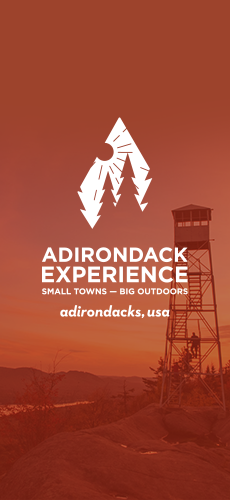The William C. Whitney Wilderness Area is a paddlers paradise. But that said, there are hiking opportunities here for hikers, birders, campers, anglers, and even some hiking for paddlers.
Hiking in the William C. Whitney Wilderness Area
This is an easy Adirondack trail system which totals 13.5 miles. The William C. Whitney and Round Lake Wildernesses are both in this general area, separated only by Sabattis Circle Road. These two Wilderness Areas are flatter than much of the Adirondacks, with low rolling hills and abundant bodies of water. Many of the routes were originally old logging roads, so the trails are broad and easy to follow. Burn Road is the main access trail to viewpoints and campsites along the north shore of Little Tupper Lake.
The Whitney Wilderness has two large lakes which can be reached via the trails. Little Tupper Lake has two trails which border the north and south shores. Stony Pond Trail and Lilypad Pond Trail. Rock Pond can be reached via a connector with Lilypad Pond Trail.
Check out these hikes in the William C. Whitney Wilderness Area :
- Mount Frederica
- Here's a story that includes information for Bum Pond and Camp Bliss, for Lake Lila (if you want to do a paddle-hike), and a bonus hike near the area.
Paddling
The Whitney Wilderness is a paddler's paradise, with plentiful carries from the trailheads and many connected water bodies. Motorized boats are not allowed, and there are no hard surface launches.
There are five carries to water bodies. The longest is the 1.8 miles between Rock Pond and Hardigan Pond. There's a 0.5 mile new carry between Hardigan Pond and Salmon Lake Outlet, which has been rerouted around wetlands. Find the take-out for the carry east of where Hardigan Pond narrows, on the south side.
There's a 0.5 mile carry between Little Salmon Lake and Lily Pad Pond, and then another 0.8 mile carry to reach Shingle Shanty Brook. The canoe carries from Little Tupper to Shingle Shanty Brook are signed and marked. Other carries to other ponds in the interior are unimproved paths.
*Please note Little Tupper Lake is shallow and placed where wind can create large waves. Be careful during rough weather, and hug the shoreline while paddling.
Camping
These two Wilderness Areas are ideal for a paddling and camping excursion. These sites are most easily reached by water, and many can only be reached by paddling.
Camping is only allowed at 60 designated primitive tent sites in the Whitney Wilderness. There are 11 designated primitive tent sites in the Round Lake Wilderness, and primitive camping is allowed, with restrictions. Follow the rules for Adirondack Primitive Camping.
There's also a lean-to on the western shore of Lake Lila.
Fishing
Lake Lila contains smallmouth bass at the northeast end, which has abundant rocky habitat. Look for lake trout in the deep water west of Buck and Spruce Islands.
Fish Little Tupper Lake, Round Lake, and Rock Pond for a unique "heritage" strain of brook trout, known as the Little Tupper strain. Only artificial lures. All brook trout should be immediately returned to the water alive.
Birding
This area is an ecological transition zone between the temperate deciduous forest and the boreal forest, with almost one third being wetlands. Loons and Hooded Mergansers are commonly seen and heard on these waters. Bald Eagles and Osprey are often seen soaring over them. The Audubon Society has designated the William C. Whitney Wilderness as an Important Bird Area.
Look for American Bittern, American Black Duck, Northern Goshawk, Canada Warbler, Rusty Blackbird, Pied-billed Grebe, Olive-sided Flycatcher, and Palm Warblers.
Cross-country skiing and snowshoeing
Cross-country skiing and snowshoeing are permitted on all hiking trails, with easy terrain and former road status making them excellent trails. In winter, the Lake Lila Access Road is gated off and closed to public traffic, making this a popular backcountry ski route. Be aware that private landowners might use it occasionally.
How to get there
The Little Tupper (Whitney) Headquarters parking area has parking, a hand launch, and accessible restrooms.
From the intersection of routes 30 and 28N in Long Lake, head northwest on NY-30 N toward School Road for 7.1 miles. Turn left onto Circle Road for 3.0 miles, then turn left onto Sabattis Rd for 1.3 miles, where there is a left turn for 0.2 miles. Then turn right onto William C Whitney Headquarters Road, keep to the left, and destination will be on the left some 800 feet later.









